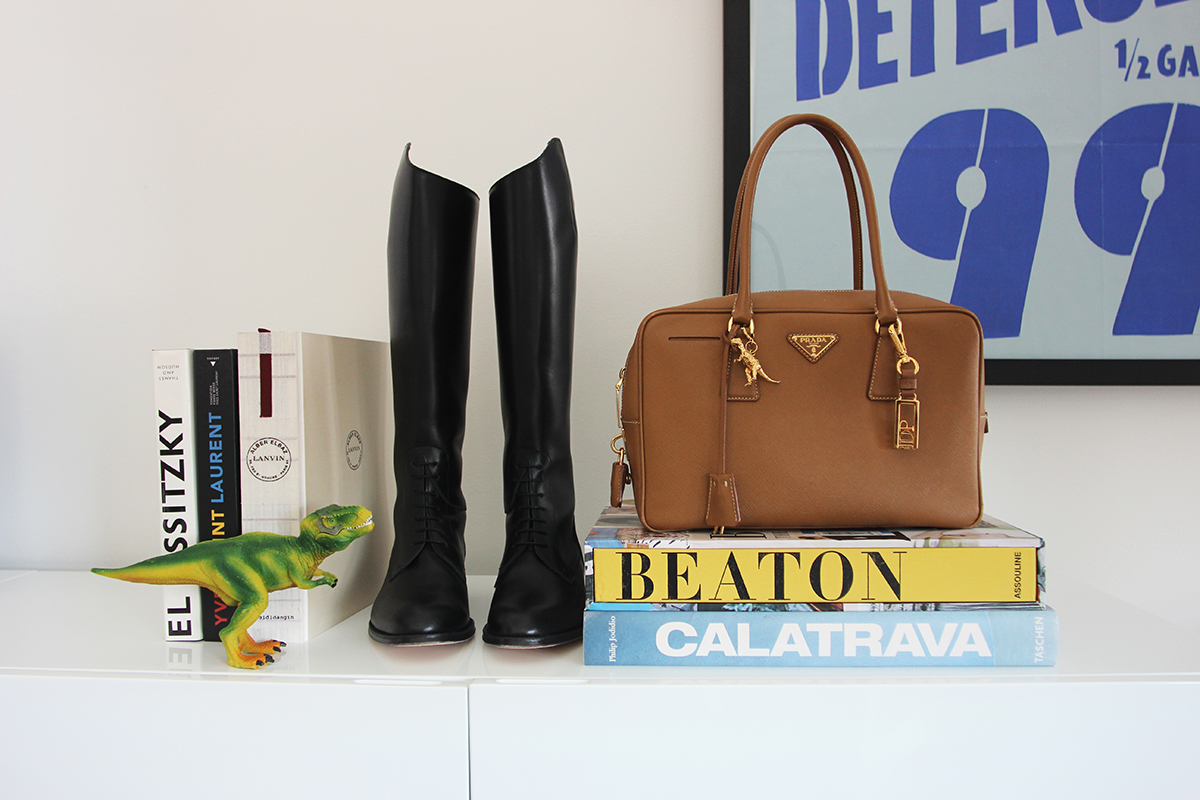Deklah Polansky
What does life in her JJ’s look like for Deklah Polansky?
I love juxtapositions; neutrals and brights; mixing textures; patterns on patterns (on patterns); high and low. I wouldn't say I'm a girly girl — I mix feminine pieces with every day more utilitarian ones. I have two boys, so rough, messy, active play are my everyday. I gravitate to classic, refined, crafted pieces that have longevity —the J.J. Gray shoes fit; they check all my boxes.
How do you balance wife, motherhood, and career?
Honestly, I am still figuring it out. I think work/life balance is BS. I always feel like something or someone close to me isn't getting as much as I would like to give, there are only so many hours in the day and one of me. The decision not to return to New York for a big offer and instead, and join studio’farrell, was the best one I've made and wish I would have made it sooner... Love the work you do and the people, and clients you work with. I have more flexibility with my young boys, and the evenings belong to them, so it’s phones-off time. We are building our design studio together —it’s a daily balancing act, and it's not perfect, but I love it.
What advice would you give someone looking to start a family while pursuing their passion?
Know what you want and what you are willing to sacrifice when you take an on a new role. Know your self-worth and be willing to say no. I think it's important to work in a place that has shared values to yours. Children need your time; quality time, and you need to be present. To paraphrase the late Barbara Bush: …you will not regret missing a meeting or a work trip, but you will regret missing mystery reader at your child’s school, and putting them to bed at night.
In a competitive market such as design, what motivates you to keep creating?
I always wanted to create beautiful things --a need to find order in the chaos and to make reason, obviously as a child I didn't know this need could turn into an actual profession. I wasn't a very good academic, so art saved me and my journey led to art college - School of Visual Arts. As a student, I learned that everything is designed, but not everything is well designed. As a practicing designer I've learned to marry purpose, form, and craft, to create something for the end consumer that is useful, usable, AND beautiful --it's a challenge I find enormously fulfilling and it continues to motivate me every day. Too often, the design is viewed by the general business audience as just about creating 'pretty things', therefore as designers, we need to do a far better job explaining the value of design to business. When asked a question about design, Charles Eames expressed it best: Q: “Is Design an expression of art?” A: “I would rather say it’s an expression of purpose. It may, if it is good enough, later be judged as art.”
How much of an impact would you say your career has on your personal style?
I would say the opposite is perhaps more accurate. My personal style has impacted my career. The design principals of minimalism, modernism, authenticity, I apply to the way I dress. I have pieces in my closet that are twenty years old and relevant today. Likewise, I'm attracted to classic typefaces versus typographic trends de jour. The more I've grown into in my personal style, the stronger my work has become —obviously, the more one practices their craft, the more fluid and confident they become.
Did you always know growing up you would be a creative director?
I knew I wanted to do something in the creative space, however, in my last corporate role, it became even more clear how I wanted to create as a designer. I came to see how fragmented the end consumer experience can be when there isn't one unifying hand pulling all the strings in harmony. I believe that the details matter; ALL the details. Most people would not notice them or be able to articulate them, but they will no doubt feel them if they are correct, or wrongly, executed. While a creative director doesn't necessarily design every piece of the solution (they can’t do it all!), they ensure that the team they assemble to create and implement a total brand experience all work seamlessly together to ensure that one cohesive vision —from the micro to the macro— is delivered to the client.
How did you get your start? The defining moment in your career.
Arnell Group (a prestigious NYC based design studio at the time) hired me right after SVA. It was demanding on every level and the hours were grueling and I loved it all! Going through all that made me feel alive, and that I was meant to do it. My defining moment was likely at MTV. I reported to both the business and creative functions, which was not an easy feat. It taught me very early on that the artifacts I designed had a greater responsibility; they had to sell. If they didn’t, then I had failed. It forced me to think about production costs and timelines, the retail landscape, and the end consumer. It made me think holistically about the role of the graphic designer, and the power of design to deliver strong business results.
What typeface would you use to describe Arthur the Oxford and Luther the riding boot and why?
For Arthur Oxford, I would use Franklin Gothic: A classic, crafted, and solid everyday font with grit. Like Arthur, Franklin has bold confidence mixed with delicate details.
For Luther the Riding Boot I would use Didot, from the Modern family of serif typefaces. It has a formal traditional elegance, great curves, and height without being stuffy.
You once mentioned that- “A successful brand identity should fit seamlessly into our daily lives” How well did the J.J. Gray boys fit into your daily regime?
When you want to own a piece of a brand and integrate it into your life and personal style, then that is successful branding. When we design a new branding identity at studio’farrell, we always ask ourselves; ‘would we wear this?’. Essentially we are asking ourselves whether the design is such that we would want to surround ourselves with it and make it a relevant part of our daily life. If a brand does not elicit that response, then it will play no role in a consumer’s life. I love the Luther riding boot and the J.J. Gray brand ethos, it is a classic crafted boot that makes me feel great.
Your style both personal and professional is all about minimalism. In what ways do you tap into that space when creating.
Minimalism isn't necessarily about less, it's about celebrating and enhancing the core message; stripping away the superfluous details. In a world exploding with choices, minimalism celebrates modernist design principles of authenticity and honesty in the use of materials, and the reduction of clutter —this helps a brand to focus on what is important and relevant to their consumer. I am a merciless editor, craft, grid and balance are essential in graphic design —I believe clarity is paramount.
Best advice you ever received?
Don't forget that you have a brand too. Whatever work you put out there represents you as well.
What advice would you give an aspiring designer when it comes to staying power?
Go to college and learn formal craft skills —there are no short cuts to this mastery and nobody has the time to teach you these skills later in the workplace. Find your voice. Stand for something, travel as much as you can, read formal design books, be interested, be curious, be willing to put in the hard work and long hours, be a team player, be present, and when you get to work put your iPhone away! Be punctual, be reliable, learn how to take constructive criticism and understand that as a designer your role is to marry a business ambition to an unfulfilled consumer need or desire. Your role is to design an artifact that connects consumers to that client's brand —you must learn to separate your personal preferences and needs from that of your client. It’s not about you.
Explain to our viewers what DesignDesire means.
You may pick something off the shelf because you like the way it looks, but you chose to buy it because you love the way it makes you feel —that is desire. As a designer I want the work I create to elicit an emotional response and connection —I need to work harder at that when we live in an age where people are bombarded by brand choices. The challenge is inspiring. Desire is a very powerful motivator in a consumer’s decision making and design creates that desirability. Design’s role in driving consumer desire is misunderstood by so many companies out there, where value engineering, cost reduction, and volume efficiency often trumps creating strong emotional consumer engagements.





